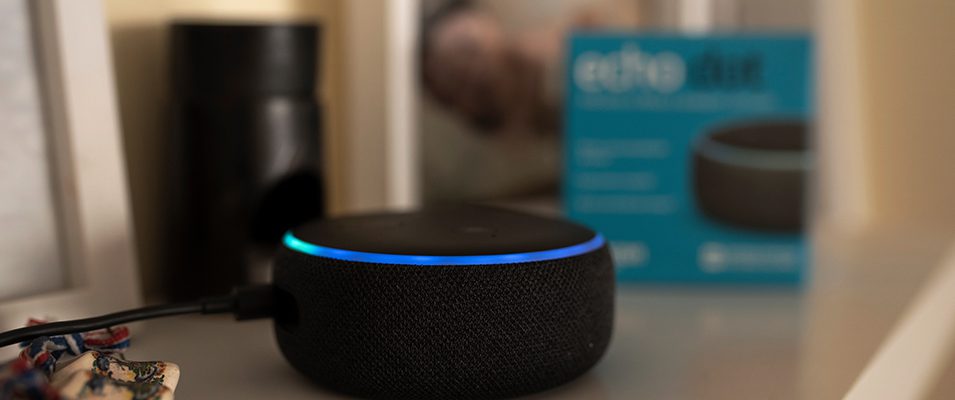
02 Mar Securing the Internet of Things (IoT)
Securing the Internet of Things (IoT):
Keeping Yourself Safe in a Connected World
The Internet of Things (IoT) has revolutionized our lives, transforming mundane everyday objects into intelligent, connected devices. Imagine controlling your home’s thermostat while you’re still miles away at work or asking a voice assistant to check your bank balance. But what exactly is the Internet of Things, and why should we be concerned about its security? As these networked devices—from smart fridges to wearable fitness trackers—become more widespread, their risks are also growing. Sunwest Bank is here to guide you in understanding the opportunities and threats of IoT, helping you to stay secure while embracing the modern conveniences that any IoT device provides.
What is the Internet of Things in Simple Terms?
The term “Internet of Things” refers to everyday devices—such as thermostats, cars, lights, and even doorbells—that are connected to the internet and each other. These connected devices collect, send, and receive data, offering us a level of automation and convenience previously unimaginable. IoT aims to seamlessly integrate the physical and digital worlds to make our lives easier and more efficient.
For instance, devices like Amazon’s Echo or Alexa allow you to stream music, control smart appliances, and even order products using voice commands. But with great connectivity comes great responsibility—protecting these devices from cyber threats becomes essential for safeguarding your privacy and security.
The Security Challenges of IoT Devices
Like many of today’s advanced technologies, this new world of vulnerable devices introduces new threats we must be aware of, and IoT security challenges are difficult to navigate. Device manufacturers ship most IoT devices with minimal security, often with easily guessable default passwords or outdated firmware. When deploying IoT devices, many users do not consider their potential as gateways for cybercriminals. Unlike traditional computers and smartphones with built-in security features, IoT security issues are more prevalent because these devices often lack built-in protection, making them more vulnerable to attacks.
What are the main security risks associated with IoT?
There are multiple layers of risk when it comes to IoT security. These include unsecured IoT devices connecting to your network, weak passwords, outdated firmware, and a general lack of awareness of potential security threats. The consequences can range from unauthorized access to sensitive data to more sinister attacks, such as hijacking devices for malicious purposes.
The Three Types of IoT Device Security
- Network Security: This involves securing the wireless network to which your IoT devices are connected. A strong and encrypted IoT network is crucial to prevent attackers from infiltrating your system and having remote access to your information or even full control of the devices.
- Device Security: Each IoT device should be individually secured, with unique passwords and up-to-date IoT firmware to minimize vulnerabilities. Device-specific protections make it much harder for hackers to steal data.
- Data Security: Sensitive data between each IoT device and server should be encrypted. Data encryption also reduces attackers’ likelihood of accessing or manipulating critical information.
How to Secure IoT Devices in Your Home and Office
To stay ahead of common IoT security challenges, Sunwest Bank recommends implementing typical best practices that should be taken with all the other devices you use daily: be proactive! Securing IoT devices is just as important, if not more critical, as securing your phone or personal laptop. Here are the key strategies to consider when dealing with insecure IoT devices:
- Strengthen Your Network Security
IoT devices rely on our home or office network; it is the foundation of their system. Cybercriminals know this and look to exploit these networks, giving them access to any connected device and its information. Secure it with Wi-Fi Protected Access II (WPA2) and a complex password. Avoid default passwords like “admin” or “123456,” as hackers easily exploit these to gain access to your network.
- Disable Guest Network Access: This reduces the risk of allowing unknown individuals to connect to your network and compromise your devices. If a guest network is necessary, ensure it requires a strong password and restricts access to critical areas.
- Segment Your Network: Use a router that supports multiple Service Set Identifiers (SSIDs) and create a separate network so that not all IoT devices and other devices are on the same vulnerable network. This way, devices used for online banking are on different networks, so even if your smart fridge is compromised, your financial information remains secure.
- Deploy Security Software and Firewalls
A firewall acts as a gatekeeper, restricting unauthorized incoming connections. This can significantly reduce the risk of intrusions from unsecured IoT devices. Consider installing a unified threat management (UTM) appliance, particularly if you have a highly connected home or office. A UTM provides a consolidated approach to network security, incorporating features like intrusion detection, antivirus, and firewall capabilities.
- Install Security Software on Mobile Devices: Since many IoT devices are controlled via smartphones and tablets, it’s crucial to ensure they are equipped with security software. This will minimize the likelihood of unauthorized access via compromised control devices.

- Update Firmware Regularly
IoT manufacturers often release firmware updates to fix known vulnerabilities in their devices. Unfortunately, many people overlook these updates or aren’t aware of how to install them, leaving their devices exposed to cyber attacks. Make it a habit to check manufacturers’ websites regularly or set up automatic notifications to stay on top of updates.
- Limit Physical Access to Devices
Many IoT security breaches start with physical access. Limit who can access your devices, particularly in shared environments. For example, securing your smart home hub with a unique password helps ensure that only trusted individuals can connect to your network.
Common Types of IoT Devices and Their Security Needs
- Smart Home Appliances
From smart TVs to connected kitchen appliances, many IoT devices offer great convenience but, as mentioned, are often shipped with weak security. Ensure you change default passwords, disable features you don’t use, and check for software updates regularly. While sometimes updating these devices is not as straightforward as updating a phone, for example, take the time to learn the device to minimize the risk of attacks.
- Security Cameras
Ironically, security cameras are often the most vulnerable when improperly secured. Use strong encryption and unique passwords to prevent unauthorized viewing, and opt for models that support multi-factor authentication.
- Wearable Devices
Wearable technology, such as smartwatches and fitness trackers, collects sensitive health data. Ensure these devices are securely paired with your smartphone, and avoid connecting to public networks to keep your data private.
How Sunwest Bank Supports Your IoT Security
At Sunwest Bank, we believe in providing banking services and the tools and information you need to protect yourself in a rapidly changing technological landscape. These devices are becoming an integral part of our everyday lives. As more consumers and businesses adopt these technologies, it is crucial to make IoT security important and understandable for every organization and individual.
Education and Resources
We provide educational resources and regular updates to help customers understand the implications of adopting new IoT technologies.
Partnership with Trusted Security Providers
Sunwest Bank partners with leading cybersecurity firms to offer services like network monitoring and cybersecurity consulting for our business customers. We can guide you in implementing best practices for securing IoT devices and protecting sensitive data and business operations.
Financial Protections for IoT-Related Breaches
Sunwest Bank has you covered if a security breach through an unsecured IoT device leads to unauthorized transactions on your account. Our advanced fraud detection systems are designed to quickly identify and respond to suspicious activities, minimizing the financial impact on our customers. We are committed to offering the highest level of security and providing reassurance that your finances are safe, no matter what.
The Future of IoT Security
The IoT revolution is only beginning, and as technology advances, the adoption of smart devices will continue to grow. With that growth comes increased risk as criminals become more sophisticated in finding ways to exploit connected devices. Vigilance is key to protecting your privacy and security.
The Role of Government and Industry Standards
One aspect of IoT security that cannot be overlooked is the development of standards and regulations. Governments and industry leaders are working to establish security standards that manufacturers must meet to protect consumers. Sunwest Bank remains at the forefront of advocating for stronger IoT security standards, ensuring our customers benefit from improved protections.
Innovations in Security Technologies
Innovations like artificial intelligence (AI) and machine learning are also being leveraged to enhance the security of many IoT devices. By analyzing patterns and identifying anomalies, these technologies help detect threats before they cause harm. At Sunwest Bank, we continuously monitor advancements in security technology, ensuring our cybersecurity measures are as robust as possible.
Taking Charge of Your IoT Security
The Internet of Things offers unprecedented convenience, from managing your home remotely to integrating intelligent technologies into your business. However, with these benefits come new security challenges. By understanding the risks and taking proactive steps to secure your IoT devices, you can enjoy the conveniences of the connected world without putting your privacy or finances at risk.




